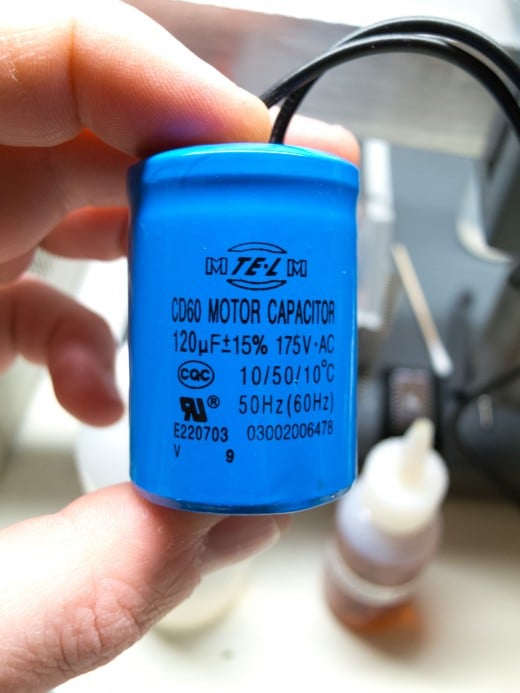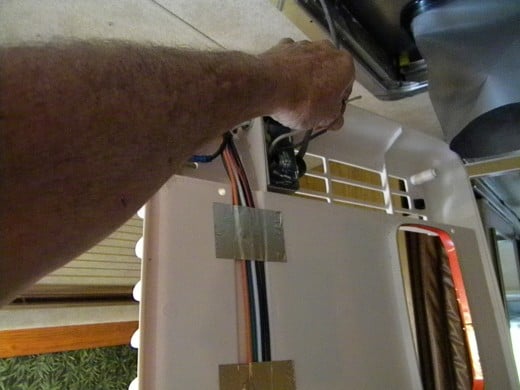If you’re considering taking an adventurous road trip in your RV, this is the best article you have to read.
Here, we talk about your RV Air Conditioner system and how to put it in order before zooming off.
Well if you don’t mind sweating it out through what should be a trip filled with fun and exploration, it’s always fine to get a working air conditioning system — there’s no alternative to sweet and cool air inside the RV.
The rooftop air conditioners used on motorhomes are made to provide many years of reliable cooling efficiency, particularly if you’re the type who maintains equipment.
Even though you may have to pull over soon and have your AC problem addressed by a trained technician, do you have to wait for the technician when you can fix minor issues yourself?
I don’t think so.
In the next section, we’ll highlight some of the major causes of RV air conditioners not blowing cold and tips on how to fix them.
Why is RV Air Conditioner not Blowing Cold?

There are several reasons to consider.
RV air conditioners are available in 2 types:
- Ducted
- Unducted
Ducted AC facilitates like central air in a house, is responsible for pushing cold air through ducts in the ceiling to send cool air to diverse portions of the room.
If your RV air conditioner isn’t blowing cold, you might want to get these portions around the ducts examined.
If we can’t charge the AC unit, we require looking at other causes for the RV air conditioner not blowing cold. As we look into the other causes mentioned below, we’ll discuss everything in detail.
Where to start?
Remember that you will be working on live circuits and moving parts that are placed on the roof of your RV. So make certain that your fingers do not come close to the moving parts.
Also, make sure that your interference does not result in even more damage than the damages you’ve experienced at first.
A lot of problems your air RV conditioner might have like slow-moving behavior, or turning off ahead of time, can be easily fixed by checking out the electrical system in order, then fixing the minor issues before moving on to the complex ones.
Truly, quick fixes can solve the problem. If they don’t, you can probe further so you can decide if you require replacing some of the items like the fan and the compressor or getting an A1 new AC unit.
RV Air Conditioner Not Cooling? (Find out the causes)
You can easily find out the RV air conditioner causes by following these steps:
- If your AC does nothing and creates no sound, it’s time to determine that your unit and its controls are receiving power.
- If your AC fan or compressor is sluggish to start, doesn’t blow any air, blows inadequately, blows only balmy air, stops after a while, dims your lights, or trips your breaker, you should first check the capacitors and replace them if required.
- If there’s no air blowing, consider the fan capacitor; if there’s no cooling, ensure the compressor is in the right working condition.
- You can test the function of the thermostat if it’s wall-mounted. If the unit only works when thermostat wires are touching, the thermostat is not working well. The thermostat is quite easy to change as well.
- Check the control board to make sure it’s okay. You may have to change the fan motor or the compressor.
- Check if the fan only works at assured speeds, the fan motor possibly will be bad.
- Check if the compressor is bad. It should possibly be changed, not fixed.
- Check if your system drips or overheats the coils — this will possibly require cleaning.
- If the roof AC leaks, the bolts might be loose or the gasket possibly will be leaking.
- Check if the system is very cold or if ice builds up, it possibly will be low on Freon.
- If the unit is boisterous, something out of place might be interfering with its motors; you can make sure by removing the covering.
Some Common Causes
In this section, we’ll look into some other common issues causing your RV AC to not blow cold and other related issues. Let’s begin:
1. Check the Power of the RV Air Conditioner
If your AC does not react at all, it doesn’t switch on and does not create any sound so that you can ascertain that is’ receiving energy from the electricity source, something may be wrong.
Check in the 12-volt board and ensure that the fuse has not blown or the breaker has not tripped. The 12-volt power system runs the controls to the AC as well as the thermostat.
The thermostat is run by 12-volt power, as your motorhome’s lights and vent fans. If these things aren’t working moreover, there is something incorrect with the 12-volt power.
A breaker possibly will be bad or there might be a loose connection in the breaker box. There’s a chance that the power converter that exchanges your higher-voltage power for 12-volt power is bad.
2. Check the Capacitors

A capacitor is usually shaped like a small battery, flask, or button.
If you have a multimeter in your instrument kit, you can use it to test the capacitor.
A high-quality capacitor should show a random worth on the multimeter that slowly decreases the longer you keep the search in place.
The good news is that it’s pretty easy to change a bad capacitor.
Check the essential voltage and model numbers on the old capacitor when sorting a new one.
3. Check the Thermostat and Switches
A bad thermostat should be fixed immediately. If you have a wall-mounted thermostat, you can determine its state by testing its voltage with your multimeter.
If the unit only goes on when you touch the thermostat wires to each other, the thermostat is certainly not good.
If the thermostat and capacitors are all okay and working well but the AC still doesn’t work, you possibly will have a bad control board.
4. Check the Compressor
A compressor that is working should turn on audibly and experience warmth when you touch it.
You can check a compressor with a clamp-on ammeter if you can charge or borrow one from someone.
Be sure about the number of amps the compressor is drawing. If it draws more than what’s available in the amp rating, written on the unit or close to the plate, the compressor is toast.
5. AC Overheating

Your AC is likely to overheat if the coils are not unsoiled.
It is just unavoidable, that after a while, these coils will have deposits of toxins and dirt inside them as a result of exposing them to harsh weather conditions.
The dirt and toxin act as insulators that stop the refrigerants from engrossing the heat from the inside and then releasing the heat out.
Sideways from dirty coils, overheating possibly will be a direct effect of dirt in the filter, an old compressor, short circuit, high voltage, or a big room.
6. Water Condensed
One of the major causes of RV AC, not cooling is condensed water.
One of the erroneous places where water can condense at times is in the pan situated under the air conditioner.
This can occur if the fan doesn’t suck the water away.
Yet, such a buildup of water possibly will be caused by dirty coils, which means that for you to fix this disturbing issue, you only need to get the dirt out of the coils.
RV Air Conditioner Not Cooling (How to fix it?)
Here are the steps and tips on how to fix your RV air conditioner causes:
Step #1: Open the Roof of your RV
In case you’re an outdoor person and love every activity in the open air, you certainly do not require the AC to keep running when you’re not inside, do you?
So, you can choose to open up the roof vent so that the moisture can fade away. This is an easy trick that will keep your AC working accurately for a long time.
Step #2: Check the Condenser Twice a Year
At least, you should check your condenser twice a year. You possibly will be having a condenser coil that is blocked by leaves or dirt. If the condenser is blocked, the inside of your RV will likely stay hot.
To get that cool blowy air in your RV, make sure you prioritize testing the condition of your condenser at least twice a year.
If the condenser is still not cooling even after unblocking it, you possibly will require looking for a more experienced technician to help you out.
Step #3: Control the Thermostat Settings
Essentially, you need an air conditioner that keeps the air inside cool, right?

However, you have to ensure that you are not overloading the capacity of your RV.
As an alternative to setting your AC at a low temperature, just turn the fan to ‘On’.
If you do this, your AC will be able to get the heat or cold that you wish in your RV.
For all time, keep the temperature settings at a moderate level so that your AC unit probably will have a longer life besides working in a good way.
Step #4: Oil the Fan inside the AC
If the RV fan motor has oil tubes for greasing the fan, you can put a few drops of the machine oil into the tubes placed on either end of the motor.
If as an alternative to having ball bearings, the motor has sleeves remember, so you can trickle just a little amount of oil where the sleeves come into contact with the fan motor shafts.
For these kinds of motor fans, a little amount of oil can work well.
Step #5: Keep the RV AC Covered for the Period of Offseason
When the RV is not in use, endeavor to cover the RV air conditioner properly.
This is important if you want to minimize repairs that can turn out to be expensive. Buy a cover that is reasonably priced to cover your RV.
Also, keeping the RV air conditioner in top shape, the cover will keep will not protect the AC, but it’ll also protect other equipment.
Why Fix Your RV Air Conditioner?
The AC is a significant part of your RV. To function properly, you need to maintain it deliberately. There are numerous problems associated with the AC — which you can fix by only cleaning it frequently and maintaining it.
Keep in mind that even though you can do all of the above by yourself, it’s advisable to consult a trained technician if the issue persists.
Having said that, remember to never service a running AC unit or one which is still plugged in.
